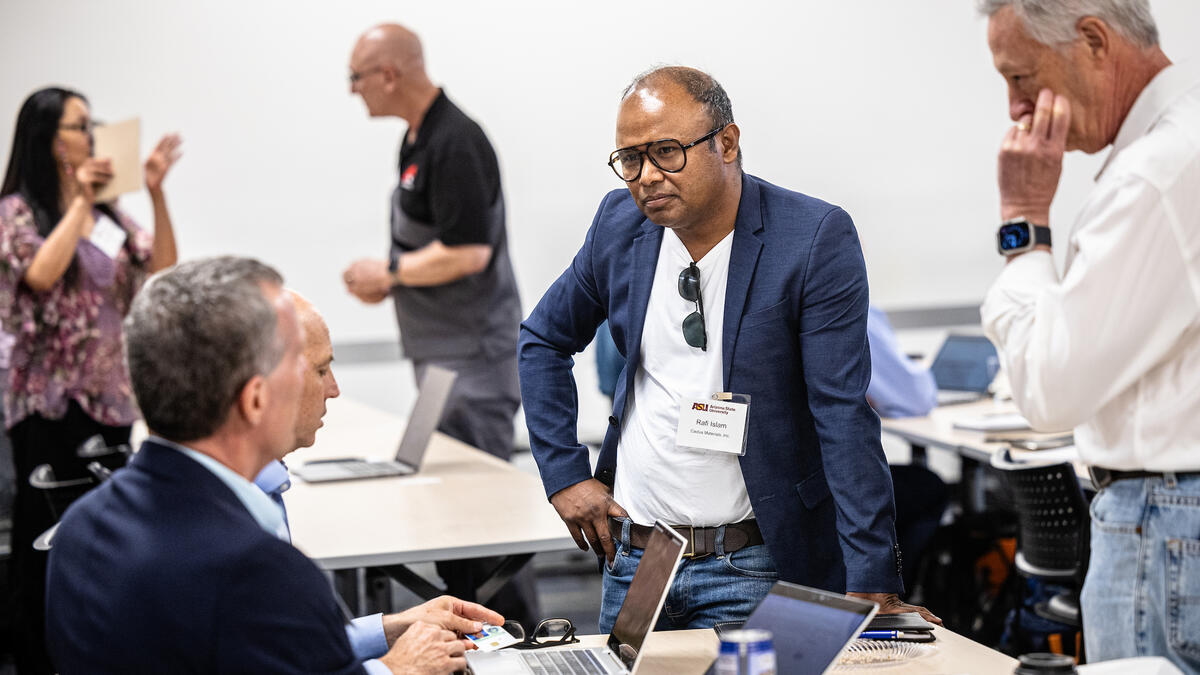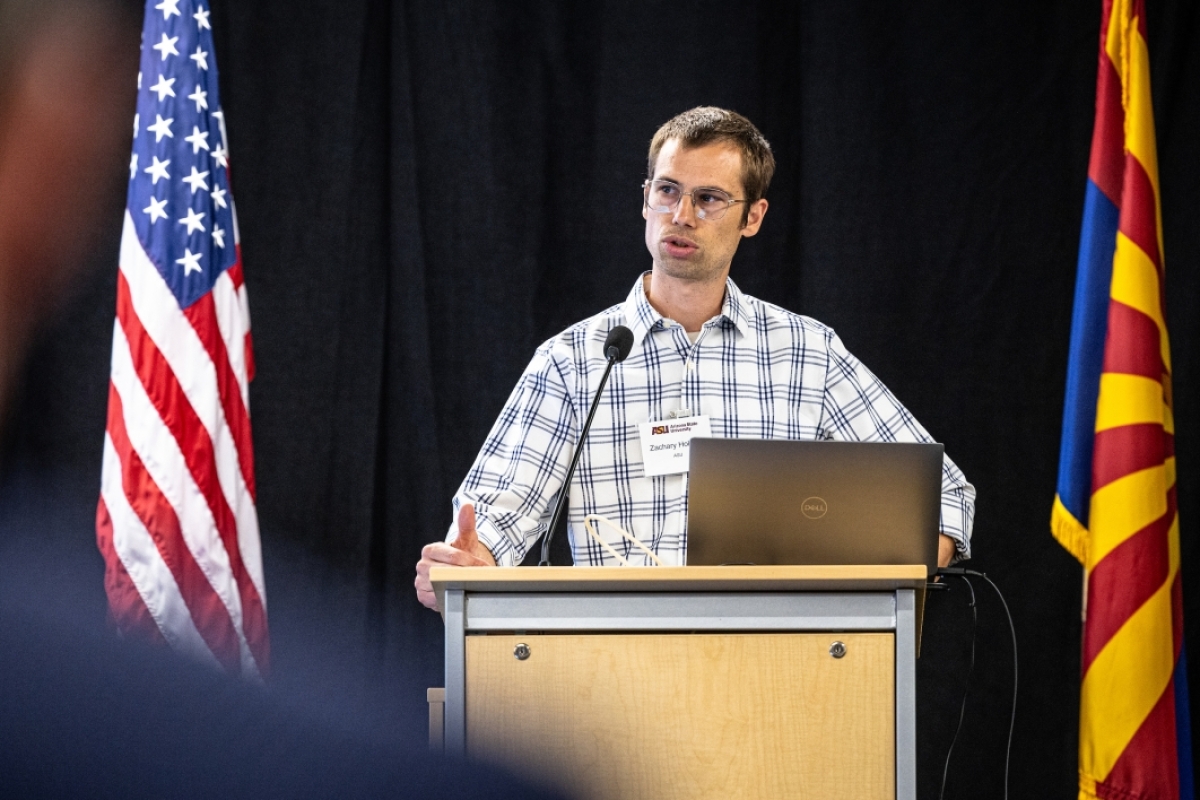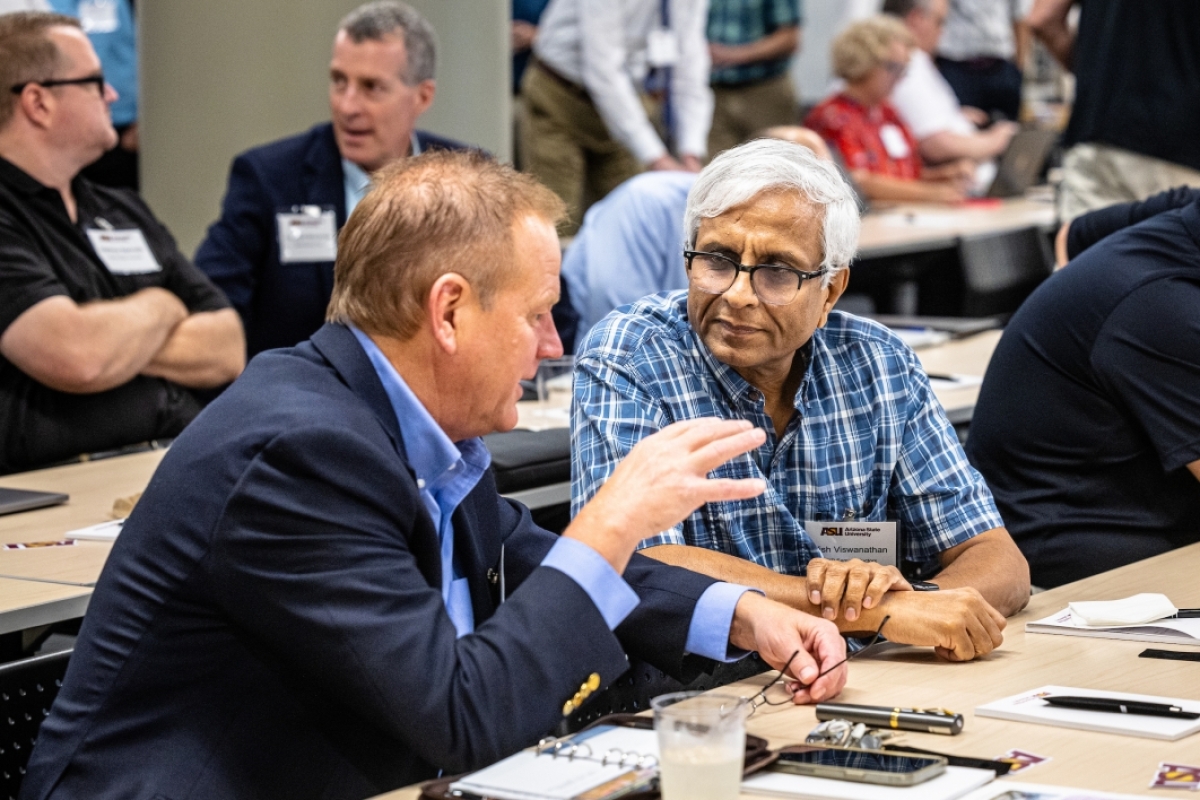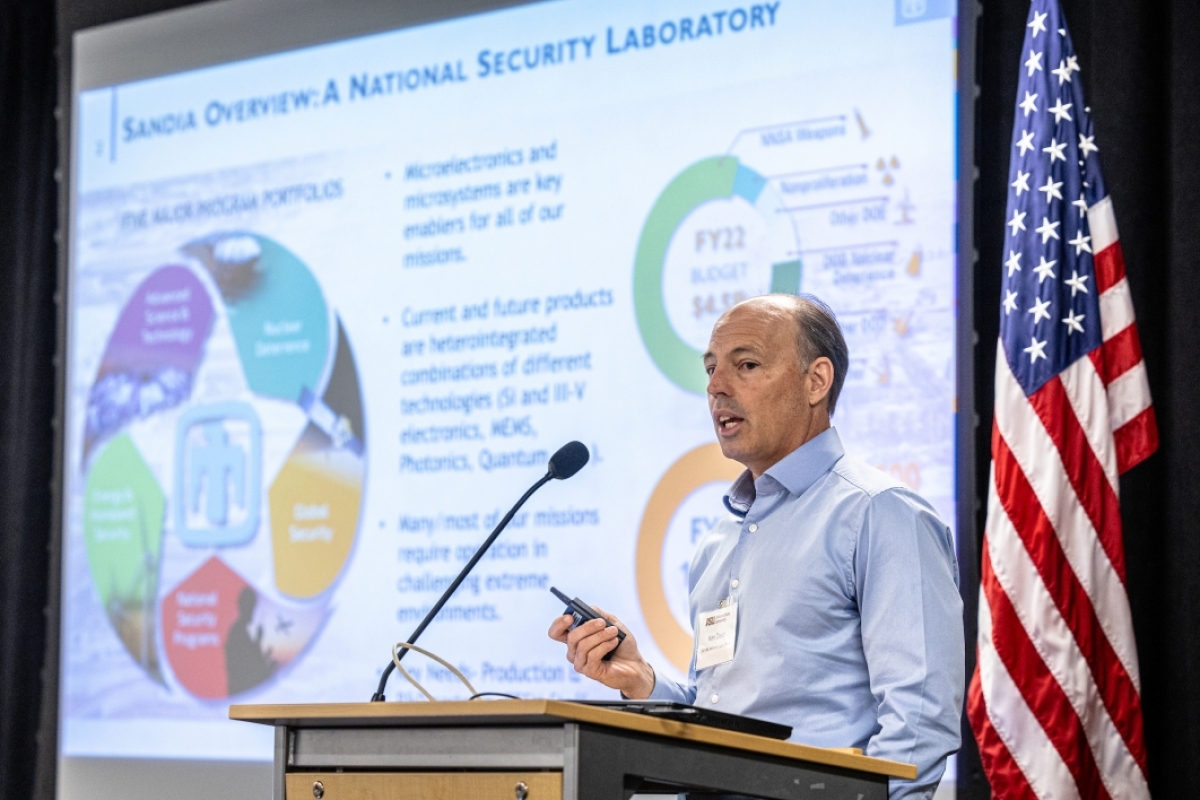Workshop brings academic, industry partners together to collaborate on CHIPS Act projects

In the global race to lead on microchip manufacturing, research and development, Arizona State University — in anticipation of opportunities that will come from its CHIPS and Science Act proposals and partnerships — is already beginning to plan, collaborate and produce.
Last week, the university held a workshop with more than 30 partners from academia, industry, national laboratories and nonprofits to discuss four quick-turn projects that will showcase the team’s readiness for national defense programs funded by the 2022 CHIPS and Science Act.
ASU has been preparing for years for the influx of work necessary to boost national security technology. In February, ASU submitted a proposal for a strategic public-private partnership on cutting-edge research and development to speed the transformation of ideas generated in the lab into practical solutions.
That collaborative effort, known as the Southwest Advanced Prototyping Hub, or the SWAP Hub, is led by ASU and has more than 60 leading corporate, startup, academic and national lab partners from the semiconductor and defense sectors in Arizona, New Mexico, Colorado and beyond.
Video by Ken Fagan/ASU News
The SWAP Hub was proposed for consideration as part of the Microelectronics Commons, a $1.63 billion Department of Defense program funded by the 2022 CHIPS and Science Act.
Sally Morton, executive vice president of ASU’s Knowledge Enterprise, told partners assembled at the workshop that the Department of Defense is now evaluating the hub proposals and is expected to announce the funding awards before the end of federal fiscal year at the end of September.
“But we have not waited idly for their response. Just the opposite,” she told the workshop participants.
“The Southwest is already one of the nation’s key centers for microelectronics activity. It’s home to some of the leading semiconductor producers and suppliers, major defense contractors, world-class universities and research institutes, and a vibrant startup community,” she said.
RELATED: Prototyping facility will give students, startups access to semiconductor space
Zachary Holman, associate professor in the School of Electrical, Computer, and Energy Engineering at ASU, told the SWAP Hub collaborators that ASU is funding four seed projects at $50,000 each, with the expectation that partners on the projects will match that funding.
“We want to get projects going within the SWAP Hub even before the government decides whether the SWAP Hub should exist,” said Holman, who also is director of faculty entrepreneurship within the Ira A. Fulton Schools of Engineering.
“We would like teams comprising folks in this room, and folks not in this room, to have already been working together for months to have initial results that can parlay into much larger projects.”
ASU is accepting proposals with an Aug. 11 deadline for the projects, which will be six months in duration and will provide proof-of-concept that the SWAP Hub is ready to move quickly on much larger-scale work.
The projects will fall within three specific areas: 5G/6G technology; artificial intelligence hardware; or “commercial leap-ahead technology,” which includes new materials and other technologies that can quickly move the U.S. military beyond traditional weapon platforms like tanks, helicopters and gunships.
Each team that proposes a project must have at least one ASU principal investigator and at least one SWAP Hub member. Each project must show how it can be scaled up.
There are two main goals of the hub program, according to Kevin McGinnis, managing director of strategic technology initiatives at ASU: improve the “lab-to-fab” pathway – the ability to take an idea in the lab and transition it to a usable outcome — and develop a prepared workforce.
“We have the opportunity with this team to move ideas through university labs and startup companies and, with the help of our defense partners, place them onto defense platforms,” he said.
“We want to take ideas that happen here in the Southwest from a prototype stage all the way through to commercial fabrication and ideally onto a national defense platform that has high impact.”
The SWAP Hub also will provide access to cutting-edge technology to students, even undergraduates.
“We hear about workforce development needs every day,” McGinnis said.
“It seems that especially in the Department of Defense, where there are special requirements related to U.S. citizenship, that their pool of qualified workers is small and diminishing, so we need to offer a number of pathways to move people into the DoD microelectronics ecosystem, whether that’s at a national lab, a defense contractor, or the DoD itself.”
Several ASU students are part of a pilot internship program at Sandia National Laboratories, according to Ken Dean, senior manager of Advanced Semiconductor Technologies at Sandia.
As a Department of Energy National Laboratory, Sandia performs fundamental research and basic science, and develops national security technology for the U.S. This includes operating a production-rigor semiconductor fabrication facility.
“Students can work with our semiconductor equipment and get exposure to both research topics and high-rigor production processes,” Dean told the gathering on Friday.
"The benefit to having interns here is we can start security clearances for them while they’re in the intern program, thereby creating a national security workforce that is ready to go.”
Top photo: Rafi Islam, CEO and CTO of Cactus Materials Inc. in Tempe networks with others at the Southwest Advanced Prototyping Hub Workshop on July 21 at SkySong, the ASU Scottsdale Innovation Center. The objective of the daylong conference was to prepare ASU and its partners to rapidly develop projects related to the DoD Microelectronics Commons for execution under the SWAP Hub, in cooperation with other regional hubs. ASU also announced an offer of four $50,000 grants in seed funding to kick-start SWAP Hub-related projects. Photo by Charlie Leight/ASU News
More Science and technology

Applied Materials invests in ASU to advance technology for a brighter future
For nearly 60 years, global giant Applied Materials has been hard at work engineering technology that continues to change how microchips are made.Their products power everything from flat-panel…

Meet ASU engineering students who are improving health care, computing and more
Furthering knowledge of water resource management, increasing the efficiency of manufacturing point-of-care health diagnostic tools and exploring new uses for emerging computer memory are just some…

Turning up the light: Plants, semiconductors and fuel production
What can plants and semiconductors teach us about fuel production?ASU's Gary Moore hopes to find out.With the aim of learning how to create viable alternatives to fossil-based fuels, Moore — an…




